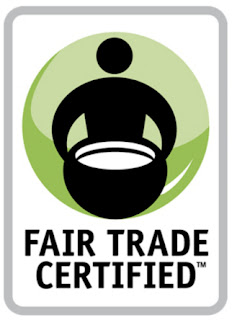Fair Trade for a Better World
Fair Trade!
What is Fair Trade?
http://www.globalexchange.org/blogs/fairtrade/
FAIR TRADE
How do consumers know that the products they're buying were produced under "fair" conditions? Since its inception in Europe almost twenty years ago, the fiar-trade system has used a label to certify faireness. In order to receive this third-party certification and bear the fairtrade label, products have to meet a series of criteria. Different fair-trade organizations frame the standards somewhat differently; the following list shows the most commonly used criteria.
- Guranteed minimum (floor) prices to producers; fair wages to laborers; social development premium
- Advance redit or payment to producers
- Democratically run producer cooperatives or work places
- Long-term contracts and trading relationships
- Environmentally sustainable production practices
- Public accountability and financial transparency
- Financial and technical assistance to producers
- Safe, non-exploitative working conditions
Fair Trade is more than a label, it is a cultural ethic, a seed that has been planted in international commodity trading. The videos below include information on traditional Fair Trade as well as a few domestic videos; how can the mechanism of Fair Trade be a reality in the United States and throughout the world? Consumer and worker empowerment and conscious consumerism is critical; hemp provides a potential boon for the United States' domestic economy and an opportunity to establish fair labor practices. Fair Trade is a viable and perhaps the viable option for drastically improving the current state of the global biosphere, labor practices, economies and people's lives.
http://www.equalexchange.coop/comicbook
. .
. . BRINGING IT HOME a new hemp documentary coming Spring 2013 from Bringing It Home Movie on Vimeo.
.
http://organicconsumers.org/clothes/index.cfm
Ten Thousand Villages:
Fair Trade Artisans, Vendors and Labels:
Syracuse Cultural Workers (Seasonal)
What isn't Fair Trade?






Comments
Post a Comment